Marcel van Marrewijk's Blog, page 6
March 21, 2022
7 Side Hustle Ideas to Try When You Still Work Full Time
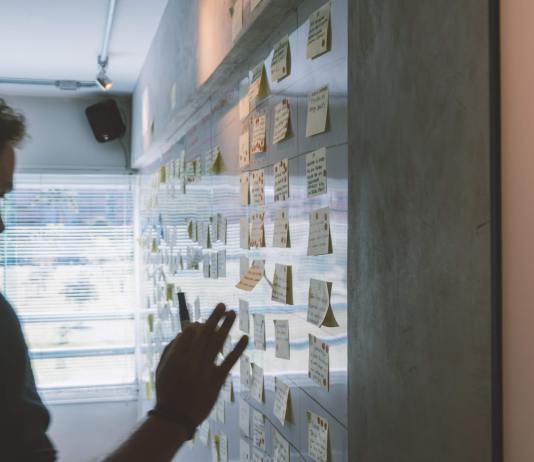
Insightful research reveals that 45% of working U.S. individuals have a side hustle. Moreover, 73% of those side hustlers earn up to $500 per month.
A side hustle helps you earn extra money while maintaining your 9-5 jobs. It’s also an excellent way of pursuing your hobby productively and offers you to polish your skills.
Here we discuss the seven side hustle ideas you can do while maintaining your day job:
ConsultingConsider offering services as a consultant, especially if you have a unique skill set in marketing. To excel in this side hustle, you must have immense knowledge and experience to score clients.
Marketing consultants boast various backgrounds and specialties, such as:
Generalists help clients create strategiesEmail marketers help businesses grow their newsletterSocial media managers help clients boost their social media presenceContent creation help companies create specialized contentMarketing consultants can find clients through their contacts lists, Fiverr marketplaces, or social media groups.
Graphic DesigningWith increasing numbers of businesses investing in a website and social media marketing, graph designing is growing in high demand.
Startups and small businesses typically have a limited budget, so freelancers turn to graphic design needs.
Choosing graphic designing as your side hustle offers you unmatched time flexibility. Plus, you can work with various clients and select your hours and rates.
Web DesigningWebsite designers can be a side hustle, but it can also be a primary job. The job is ideal for individuals with in-depth technical knowledge, especially if you enjoy creating designs and are savvy with website building.
Web designing offers you the flexibility to choose between a single client and multiple projects. Moreover, you can define your timeframe and availability hours.
Personal TrainingIf you’re a fitness enthusiast or have a wealth of knowledge of nutrition and exercise, it’s a wise idea to become a personal trainer.
Consider using your experience, knowledge, and skill set to offer personalized virtual or physical training to individuals wanting to achieve their dream body. You may even choose to create YouTube videos or broadcast lessons.
Moreover, if you have a home gym or a spare room, you’ll likely not need to make additional investments. You may even get a nutritionist certificate to help provide clients with dietary and fitness advice.
Mobile Technology RepairIf you’re someone who enjoys playing with mobiles, consider becoming a mobile technology repairer. The duties and job responsibilities of a mobile technology repairer include:
Advising their clients on warranty issues and recommended productsInstalling and updating phone softwareReplacing damaged parts and components like LCD screens, batteries, buttons, and keypads Running tests to assess the mobile phone’s functionalityTroubleshooting wiring problemsTo become a mobile technology repairer, you must know about androids, electronics, iOS, mobile device software frameworks, windows phones, and mobile operating systems. In addition, you should have the following soft skills:
Applying company policiesCreating solutions through critical-thinkingMaintaining equipment and inspect Operating two-way radio systemsProviding customer informationRepairing mobile phonesUsing repair manualsUtilizing precision toolsExcel in your side hustles as a mobile technology repairer by leveraging state-of-the-art portable tools like a small multimeter. These easy-to-carry and revolutionary tools enable technicians to troubleshoot electronic problems quickly and efficiently.
BookkeepingAccording to in-depth research by the U.S. Chamber of Commerce, 4.3 million new businesses started across the country. It led to a 24.6% increase in new business.
Thus, it’s clear that the demand for bookkeepers is only increasing. Bookkeepers have the following responsibilities and duties:
Balancing the company checkboxCompiling the necessary documents for tax dayDoing payrollPaying off vendorsSending out invoicesTo score a high-paying job, you may leverage bookkeeping software like Xero, QuickBooks, etc.
Digital MarketingDigital marketing involves promoting products and services via digital platforms. If you have marketing and strong communication skills, you may choose to become a digital marketer.
As a digital marketer, you may choose one of the following domains:
Online AdvertisingEmail MarketingSocial Media MarketingText MessagingAffiliate MarketingSearch Engine OptimizationWhat Skills Should You Have to Succeed at Side Hustling?Succeeding at your side hustling job requires you to have the following skillset:
Self-MotivationPart of succeeding as a side hustler is learning to create your workflow and stay motivated. This way, you can rest assured you’ll finish your products and assignments on time.
Willingness to LearnThere’s nothing like ‘too old’ or ‘too experienced’ to learn new things. Even if you have the skills or knowledge of your potential gig, try learning something new.
Your side hustle itself is a learning experience that can help you learn new skills, develop your career, and make money.
PerspectiveHere’s the thing: it takes time before you can start making a lot of money through your side hustle. The money won’t automatically begin flowing.
Remember that if one side hustle doesn’t work out, you can try another.
The Bottom LineWhether you choose to pursue a side gig or freelance endeavor, side hustling can help you develop a healthy income stream.
Remember that side hustles aren’t simply tools for creating a recurring income. It’s also an excellent way of learning valuable skills and growing professionally as an entrepreneur.
The post 7 Side Hustle Ideas to Try When You Still Work Full Time appeared first on Seats2meet.
March 16, 2022
Van zeepjes voor in bad tot Crypto miljardair in de havenstad. Rotterdammer Bob Ultee, de Koning van de Crypto kijkt uit over Afrika.

Nieuws in duurzaamheidsland: Bob Eco is een snelgroeiende producent en exploitant van elektrische voertuigen. Met haar motorfietsen en 3-wielers die speciaal ontwikkeld zijn voor ontwikkelingslanden, biedt zij goedkope en efficiënte transportoplossingen, op onder andere de Afrikaanse markten.
Baanbrekend
In staat om te besparen op brandstofkosten, verviervoudigen chauffeurs die overstappen op een van de voertuigen van Bob Eco hun gemiddelde inkomen, waardoor zij hun gezin kunnen onderhouden en hun huizen kunnen uitrusten met basisbehoeften zoals stromend water. Bob Eco is de duidelijke keuze voor zowel chauffeurs als het milieu en heeft de aandacht getrokken van Afrikaanse regeringen. Dit heeft al geleid tot verschillende samenwerkingsverbanden op staatsniveau.
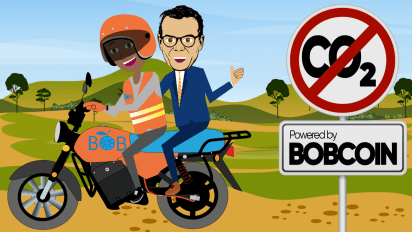
200 miljoen
Om aan de vraag te kunnen blijven voldoen, tekende Bob Eco een productieovereenkomst van 200 miljoen dollar met productiegigant Jincheng Suzuki voor jaarlijkse volumes van 200.000 eenheden. Bob Eco heeft onlangs ook een productiefaciliteit geopend die zich richt op driewielers en Tuk Tuks, die in de volksmond worden gebruikt voor het comfortabel vervoeren van volumineuze goederen en grotere groepen mensen. Deze faciliteit heeft een jaarlijkse productiecapaciteit van 1.500.000. Alleen al de elektrische voertuigen die door deze faciliteit worden geproduceerd, hebben het potentieel om tegen 2024 meer dan 1.500.000 ton CO2-uitstoot te besparen.
ICO-WA | Bobcoin
Voor de financiering van meer motorfietsen lanceerde Bob Eco in maart 2021 de Bobcoin (BOBC) op de secundaire markt middels een STO listing. Bob Eco verkocht hiermee 25% van alle Bobcoins voor tientallen miljoenen dollars aan investeerders in meer dan 40 landen. Door het enorme succes van de STO heeft Bob Eco besloten nu een volgende stap te maken voor het listen van de Bobcoin op de primaire cryptomarkt middels een ICO-WA. Bobcoin | BOBC is inmiddeld verhandelbaar via Tier A Crytpo Exchanges zoals XT.com, Lbank, Bitmarkt en heeft volgens CoinMarketCap een waardering van ruim 1.8 miljard dollar. Hiermee is Bobcoin | BOBC in 1 jaar tijd een fenomenale 1538 procent gestegen en heeft tientallen investeerders die een jaar geleden zijn ingestap de miljonairsstatus bezorgd.
The post Van zeepjes voor in bad tot Crypto miljardair in de havenstad. Rotterdammer Bob Ultee, de Koning van de Crypto kijkt uit over Afrika. appeared first on Seats2meet.
December 28, 2021
From owning scarcity to sharing abundance — how ‘abundanomics’ could transform our future

Author Simon Spooner / Infrastructure Futures
The journey from ‘economics’ to ‘abundanomics’ won’t be easy. But the rewards could be huge. And as our existing consumer capitalism model becomes increasingly untenable, the need for change grows stronger.
How do you see the future of mankind: a comfortable life of plenty, or a dystopian wilderness of want? The most common expectation is probably the negative one — fighting for dwindling resources, coping with disruption of climate change, rising sea levels and mass migration.
Yet this does not have to be our fate. We can change our basic economic model and adapt to living more harmoniously with the world around us. But how?
Rather than a choice between destructive consumer societies or an ascetic ‘green’ lifestyle without our material comforts, our future could be one where we increase our standards of living and become sustainable. It’s based on a new way of formulating the problems of production and consumption: abundanomics.
It’s not about having less or consuming less. It’s about having and consuming in a different way. And if we do it correctly we can all reap the rewards. Circularity and abundance aren’t idle fantasy, but a viable path towards a more sustainable way of life.
It’s the economy, stupidEconomics has governed human life for centuries. At its most fundamental, economics is about the distribution of limited resources among consumers. Different theories argued for the most efficient, or the most just, or the most effective distribution of those resources.
But regardless of the theory, economics depends upon the notion that resources are valuable but finite. Once consumed, they become waste with no, or negative, value. This linear process demands the constant sourcing of new raw materials and labour to produce the next set of consumable goods. Mine it or grow it, then make it, before using it and dumping it. Supply and demand curves dominate, and pointless activity is rewarded as economic growth (measured as GDP), while depleted resources, degraded environment and devastated ecology are dismissed as ‘externalities’.
Each cycle of economic activity creates problems that must then be sorted out, cancelling out the gains in wealth. Unfairly, those that pay the price of environmental degradation are not the ones who gained the wealth. But if we can eliminate the negative impact of the use of energy and produce longer lasting goods, then at the end of each cycle there is a greater abundance of wealth to share than at the start.
A bundle of energyEnergy is the most important resource in any economic system. We need it in some form to get just about anything done. So energy is the engine of economic growth, and getting more of it needs both physical infrastructure and the intangible infrastructure of social organisation.
The old economic model relied upon fossil fuels (or before that wood). Not only do fossil fuels conform to the traditional model of economics, they actively reinforce it. If the energy powering the system is itself finite and produces vast waste products, these characteristics will shape the entire conception of economics.
The threat now is not ‘peak oil’ but the limit on the atmosphere’s capacity to absorb greenhouse gasses. Fortunately, just as this has become apparent access to non-polluting, renewable energy sources has become a realistic and viable alternative. Theoretically, once we have organised the necessary infrastructure, renewable energy resources are almost infinite. Then, given sufficient energy, we can transform the resource consuming economy into a circular process that removes many of the constraints on production, material recovery and re-use.

Even in extreme climates, these principles can help to create sustainable lifestyles. In the Middle East, for example, clean power can come from solar and wind, which can be used to desalinate seawater to provide the vital resource for life. Further energy storage with liquid air, which involves using excess power to compress and cool air to release heat, then re-gassifying to recover the energy can create intense cold. If combined with district cooling systems and the heating of waste biosolids to release re-useable resources, even Saudi Arabia’s electrical and thermal needs could be met with almost no net resource consumption or greenhouse gas emissions.
These developments can help us to replace the old, linear model of economics, with its waste products and insatiable appetite for new resources, with a sustainable circular model. Rather than managing scarcity, the new model is about the distribution and maintenance of abundance.
Future citiesAccording to the UN, by 2050 it’s estimated that over two-thirds of human beings will live in cities. Reaching a post-scarcity era will depend on how effectively we can revolutionise the way our cities work. This will be enabled by the application of new technology in the infrastructure but will be driven by new social organisation.
We often take the form of cities for granted. But their layouts are no accident. They are not fixed; they have evolved through history. They’re determined by the transportation technologies, building materials, sanitation technology, social power structures, and military imperatives at the time of their foundation and flourishing.
Most of our urban areas reflect our old assumption of the need for centralisation. Government and services for shoppers, students, and patients are usually in the centre, with residential areas and secondary industry in the periphery, then a huge, distant hinterland for food production. All of these city-shaping presumptions are eroded by new technology.

Now, with detailed information and communication always available to us in the palm of our hands, the rules for how we interact with our urban infrastructure are changing. It is now much easier to negotiate sharing infrastructure instead of having to own it exclusively.
Take work, for example. For much of the 20th century, employment meant working in a centralised office block or factory, with a specific station assigned to you, to which you would travel every weekday morning in order to work your regular hours. It was standardised, rigid, and for white collar jobs near-universal. These patterns of working shaped the infrastructure and rhythm of urban life, creating ‘rush hour’ commuting, office culture, and dominant office blocks.
Is work working?The old ways of working are now being undermined. The growing power of the internet, computers and data mean that many people can perform parts of their jobs just as effectively from home, or from a coffee shop. The commute, vast office blocks which lie dormant at weekends, rush hour congestion — all of these ‘facts’ of city life can be refashioned to create a more sustainable lifestyle.
Future cities can help to usher in a new mindset and lifestyle for their citizens. Multi-purpose, modular and flexible allocation of space enables greater efficiency and reduces demand for more buildings. Retail areas could be moved around on demand. Spaces can host both work and leisure activities. Companies and people can share resources depending on their need, encouraging co-working and easing pressure on the environment.
Food is another example of this transformation. Traditionally farmland around the city was its breadbasket. Now food is sourced from all around the globe through trade networks. But in the future, with indoor urban agriculture systems, food from all climates could be grown right within the city area and supplied direct to consumers.
An abundant futureThere are good reasons to be hopeful for a future beyond scarcity or calamity. Around the world, we’ve witnessed dramatic changes in lifestyles and prospects in the last few decades, and most of it has unfolded peacefully. Nonetheless, if abundance isn’t distributed and areas are left to face climate change armed only with scarcity economics, the resulting inequality will unleash forces imperilling the entire system.
And there is another danger, stemming not from missing the opportunity for abundance but on implementing it a way that generates alienation. Many Western countries have already, at least temporally, eliminated scarcity for the majority of their populations. Yet satisfaction and happiness appear to have declined. Mental health is in crisis, depression is growing, and the search for a meaningful life feels more urgent than ever. Alienation has led some in society to reject the very social infrastructure and political systems that have brought them abundance.
In our quest for abundance, we have to learn one of the most important lessons of the 20th century. Fulfilling our material needs alone won’t make us happy, and if it comes at the expense of the intangible things that make life worth living, such as community and a sense of identity, it may even make us miserable. To find a way to the land of plenty, we must take the human with us, and create a future that’s abundant in joy as well as comfort.
— Simon Spooner (Technical Director & Principal Consultant, Water & Environment sector)
Find out more about how Atkins is implementing groundbreaking solutions to some of the world’s most pressing infrastructure challenges
Original article source Mar 20, 2019 https://medium.com/the-future-and-other-challenges/from-owning-scarcity-to-sharing-abundance-6be42d9f81ac

This work is licensed under a Creative Commons Attribution-ShareAlike 4.0 International License.
The post From owning scarcity to sharing abundance — how ‘abundanomics’ could transform our future appeared first on Seats2meet.
December 16, 2021
Pensioen regelen als zzp’er: dit moet je weten
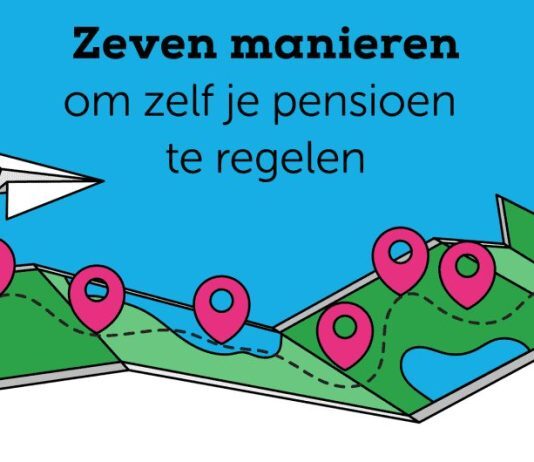
Het fijne aan ondernemen is natuurlijk de vrijheid die het geeft! Je bepaalt vaak zelf waar je werkt, wanneer en voor wie. Maar voor jezelf werken betekent ook: zelf dingen regelen. Zoals je pensioen! Makkelijk te vergeten (of uit te stellen), maar daardoor niet minder belangrijk. In tegendeel… Pensioen is niets anders dan een pot geld voor later die net zoveel vrijheid geeft in de toekomst, als het ondernemen nu.
Tip: Wil je alle verschillende manieren weten om je pensioen te regelen? Op 21 en 23 december geeft Sjaak van BrightPensioen het webinar “Zo regel je je pensioen als zzp’er en ondernemer” Meld je hier aan!
Wat is pensioen?We beginnen met de basis: een lesje pensioen. Er zijn veel definities van pensioen, maar misschien wel de meest simpele: “pensioen is een spaarpot voor later”. Niets meer en niets minder. Wat het anders – en aantrekkelijker – maakt dan een gewone spaarpot? Dat doet de Belastingdienst. Je krijgt namelijk flink belastingvoordeel op je pensioenpot. Pensioen opbouwen kan daardoor veel aantrekkelijker zijn dan gewoon sparen.
Ons pensioenstelselHet Nederlandse pensioenstelsel bestaat uit drie pijlers.
De eerste pijler is de AOW. Een basispensioen waar je niets voor hoeft te doen. Die basis is trouwens niet echt hoog. Vandaar dat de meeste mensen nog wat extra doen.
De tweede pijler is pensioen via een werkgever. Bij een pensioenfonds, een pensioenverzekeraar of een premiepensioeninstelling. Dit betekent trouwens niet automatisch dat je ‘goed zit’. Niet iedere werkgever bouwt de volle 100% voor je op. Iets wat niet iedereen weet. Daarnaast; het is überhaupt niet voor iedereen in loondienst geregeld. En ook niet voor zzp’ers, freelancers en ondernemers. Voor die mensen is er de derde pijler.
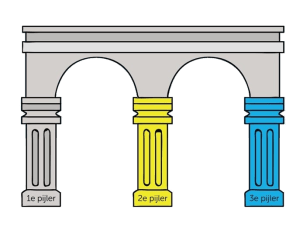
De derde pijler heet ook wel individueel pensioen (lijfrente). Deze individuele pensioenpot is altijd aan een persoon (jou) gekoppeld. Vandaar: lijfrente. Dit is dé pijler voor mensen die zelf hun pensioen moeten regelen. Maar dat ‘zelf regelen’ gebeurt lang niet altijd. En het vervelende daarvan is… Dat ‘kost’ je waarschijnlijk veel meer dan je doorhebt.
Dit kost je pensioen uitstellenBen je bijvoorbeeld 30 en begin je met een inleg van € 250 per maand. Met een rendement van 6% levert dit je op je 67ste zo’n € 370.500 op. Begin je vijf jaar later, op je 35ste? Dan bouw je al snel € 103.500 minder op! (In die drie jaar zou je daarvan € 15.000 hebben ingelegd, de rest is rendement…) Je mist een stukje tijd en rendement.
Pak je belastingvoordeel vóór 31 decemberAls het even kan op tijd (en vooral: überhaupt) beginnen is dus cruciaal. Het liefst gisteren, maar anders vandaag. Daarnaast heb je bij pensioen opbouwen in de derde pijler te maken met jaarruimte. Simpel gezegd: je kunt belastingvoordeel krijgen als je pensioen opbouwt als zzp’er. Deze jaarruimte is gebonden aan het jaar. Dus wil je jouw jaarruimte (belastingvoordeel) van dit jaar nog gebruiken? Dan moet je het regelen vóór 31 december.
Denk je nu: waar te beginnen? Geen paniek! Onze partner BrightPensioen helpt je op weg. Meld je aan voor het pensioen webinar op 21 december om 20:00 uur of kom op 23 december om 13:30 gezellig langs bij Seats2Meet Utrecht. Binnen een uurtje weet je precies hoe het werkt en waar te beginnen. En natuurlijk is er ruimte voor al je vragen. Aanmelden voor beide events kan hier
Liever lezen dan het webinar bekijken? Lees dan dit whitepaper over de zeven manieren om je pensioen te regelen.
The post Pensioen regelen als zzp’er: dit moet je weten appeared first on Seats2meet.
December 9, 2021
Fiks | Het perfecte StartUp team: hustler, hacker en een hipster
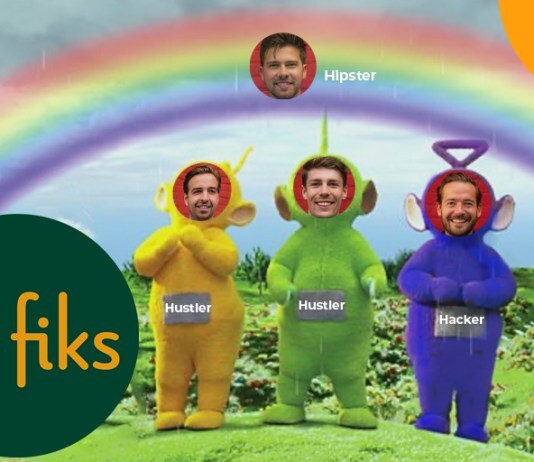
Happy day everyone… 
Tof om te zien dat je hier bent voor deel 2 van onze Building in Public!
Deel 1 nog niet gelezen? Check ‘m hier.
Recap: Ik ben Iron van Fiks. Samen met Niels & Berke heb ik een stageplatform gebouwd waarop we studenten connecten met bedrijven via WhatsApp.
Zelf ben ik anderhalf jaar geleden afgestudeerd aan de Universiteit Maastricht en vond ik het lastig om een stage in Amsterdam te vinden. Als student ben je bekend met de corporates van deze wereld, maar er zijn nog zeker duizenden andere interessante bedrijven in Nederland waar je nog nooit van gehoord hebt.
We zijn nu zo’n twee jaar bezig en hebben inmiddels 140+ bedrijven aangehaakt. Desalniettemin, zijn we ook in iedere startup-valkuil getrapt die er maar bestaat. Hier schrijven we iedere maand een blog over onder de noemer: ‘Building in Public’. De daadwerkelijke update wordt als eerste gepost op fiks.nl, vandaar dat deze updates op Seats2Meet een beetje achterlopen.
En dan nu… deel 2 van Fiks Building in Public:
In het eerste deel heb ik vooral een start gemaakt aan onze building in public serie, waarbij ik iedere maand een update geef over onze business. Hier publiceer ik naast onze financials en nieuwe klanten ook onze struggles en updates. Vandaag vooral struggles…
Na mijn vorige post heb ik veel leuke reacties gekregen maar ook een aantal kleine kanttekeningen die ik nu meegenomen heb in deel 2. Twee kanttekeningen kwamen vaker terug:
“Wat is de dynamiek van het team? Wie doet wat en hoe werken jullie samen?”
“Waar loop je nou persoonlijk tegenaan? Maak het nog persoonlijker vanuit jouw oogpunt.”
Deel 2 gaat net iets dieper in op ons team en de dynamiek tussen ons en daarnaast heb ik het ook iets persoonlijker gemaakt.
We zijn de Building in Public vooral begonnen om het over onze business te hebben, maar aangezien we nog in de fase zijn dat ‘de vent, de tent’ is, zijn de business struggles en persoonlijke struggles nog vaak hetzelfde.
Het format is hetzelfde. Let’s go.

Update Mei 2021
Cijfers
 YTD Omzet + Partners + Studenten
YTD Omzet + Partners + StudentenInvesterings update

Wie zijn wij en wie is wie

De struggles

Cijfers

Doel omzet 2021








 85K
85K
Doel aantal betalende partners 2021









 140
140
Doel aantal aanmeldingen studenten 2021









 3400
3400
Investerings Update

Op dit moment hebben we ervoor gekozen om op eigen benen te blijven staan en geen financiering aan te trekken.
Dit is voor ons niet helemaal het goede moment.
Persoonlijk heb ik me heel erg vastgehouden aan het advies dat ik uit een gesprek met een ondernemer heb meegenomen: “Ga op zoek naar investering als je een kans in de markt ziet die je zonder financiering niet kan pakken”.
Ik zie het voor me dat die kans gaat komen, maar nu zijn we vooral gefocust op het fundament van onze business.
Misschien denk ik te klein… maar we willen dat de basis staat voordat we onbezonnen gaan groeien.
Ondanks dat financiering er nog even niet inzit is de relatie met de desbetreffende investeerder alleen maar sterker geworden. We hebben een soort mentor erbij die ons helpt en meekijkt in de business om uiteindelijk in een later stadium echt de handen ineen te slaan.
@Investeerder ik hoop dat je meeleest!

De situatie nu…
Wie zijn wij en wie is wie eigenlijk?

In het voorjaar van 2019 hadden Berke en ik de plannen voor Fiks rond. De rolverdeling kwam op het volgende neer: “Als jij het kan bouwen, ga ik het verkopen”… (van Iron → Berke)
Op dat moment werkten we allebei full-time. Toch beschikken we allebei over de overmoedigheid om te denken dat we even in de avonduren een two-sided marketplace gingen bouwen, waar massa’s studenten en bedrijven elkaar op zouden vinden… (jaja)…
Gelukkig kwamen we er snel genoeg achter dat dit niet ging werken en dat we waarschijnlijk meerdere mensen nodig gingen hebben:
Ik ken Tom van de mijn stageperiode bij Finance Ideas. Een consultant in hart en nieren. Een van de slimste en meest ijverige personen die ik tijdens mijn studententijd ben tegenkomen. “Die moet ik erbij hebben”, dacht ik.
Tom vond het verhaal interessant en herkende het probleem aangezien hij (natuurlijk) twee jaar voorzitter is geweest van de studievereniging op de faculteit. Tom was goed in het verbinden van mensen en zorgde er ook voor dat we met de Universiteit Maastricht aan tafel kwamen. Maar in the end miste hij de drang naar het ondernemerschap en begon zijn consultancy-hart sneller te kloppen, waardoor hij uiteindelijk de knoop doorhakte en bij Deloitte aan de slag ging.
Berke en ik waren dus weer terug bij af, totdat er een engel uit de hemel kwam en zichzelf aan ons voorstelde. Zijn naam was:
Vanaf de zomer van 2019 heeft David zich bij het team gevoegd. Ook hij geloofde in het idee van Fiks, maar moest nog wel een half jaar afstuderen. Met David erbij kreeg het team ook een bak met nieuwe skills en kritisch denkvermogen.
Terwijl ik nog wel veel bezig was met het uittekenen luchtkastelen uit de toekomst, ging David al snel volle gas met de handen in de klei. “Eerst maar eens geld verdienen en studenten vinden”.
Zo geschiedde: Eerste betalende klant: Oktober 2019
…maar met drie parttimers een stageplatform uit de grond stampen was nog steeds onbegonnen werk.
De startup waar ik toen full-time voor werkte ging als een nachtkaarsje uit, waardoor ik me volledig op Fiks ben gaan storten vanaf januari 2020. Al snel volgde David na het afronden van z’n scriptie in mei.
…Met 1 founder part-time, 2 founders full-time, goede onderlinge afspraken en een stukje financiering was Fiks opeens een legit bedrijf.
Toch miste er een puzzelstukje. Een stukje tussen David & mij aan de ene, (niet technische) kant en Berke aan de andere (technische) kant.
David & Ik hadden de ideeën over nieuwe features omdat wij met de klant en studenten in contact stonden, maar we hadden totaal geen idee hoe we deze ideeën vertaalden naar technische oplossingen.
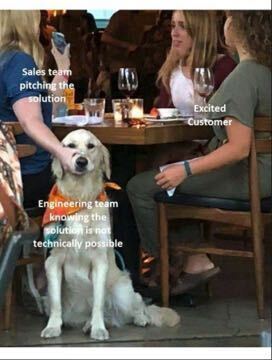
Daarnaast waren er continu kleine aanpassingen nodig om onze website te optimaliseren. Dit zorgde voor frustratie aangezien Berke geen tijd had voor kleine optimalisaties en wij niet bij machte waren om deze zelf door te voeren.
Thierry en ik kennen elkaar van de basisschool. We go way back. Via via kwam ik erachter dat Thierry zijn master aan het afronden was en nog geen duidelijk plan had voor na zijn master. Thierry studeerde Business & IT → Exact wat we nodig hadden!
Lang verhaal kort: Het werkte niet helemaal. Ook Thierry voelde de ondernemersdrang niet zoals wij de voelde…
En toen kwam er weer een engel uit de hemel met heeeel veeel ondernemersdrang en zijn naam was:
Niels en ik hebben een groot deel van onze studententijd samengewoond en daardoor was Niels in feite vanaf het begin indirect betrokken bij Fiks.
Helemaal aan het begin heb ik Niels gevraagd om mee te doen, maar de studie kreeg voorrang… Niels in zijn studententijd 

In maart 2020 zijn we nogmaals ‘virtueel’ (Niels zat in Korea) aan tafel gegaan, omdat we wisten dat hij het missende stukje zou zijn.
In de startup wereld bestaat er zoiets als een ultiem startup founder team. Vaak is dat een drietal dat qua skills complementair is aan elkaar: The Hacker, The Hipster & The Hustler.
Ons ultieme team bestaat al uit vier, maar voor de beeldvorming maak ik even de hustler, hacker, hipster schets:
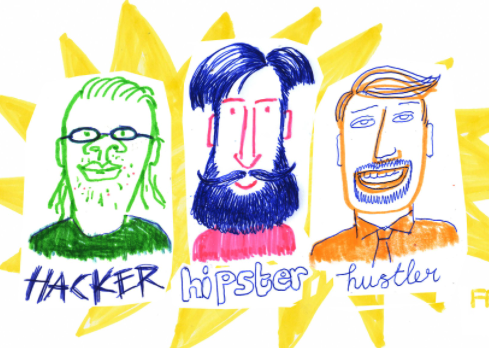
The hacker, the hipster & the hustler
The Hustler: “Someone who gets the first customers in” → Me & David
The Hipster: “They’ll make sure the final product is cooler than anything else out there. But, not only that, they’ll ensure the shade of blue used to accent the font really brings out the subtle homage to an artist from the ’70’s you’ve probably never heard of”. → Exact Niels
The Hacker: Foto hierboven zegt genoeg → Berke
Zoals zoveel dingen klinken de namen eigenlijk veel stoerder dan dat het in werkelijkheid is.
In ons geval ben ik niet echt aan het ‘hustlen’, maar eerder samen met nieuwe partners aan het kijken of onze service aansluit. David doet dit bij de huidige partners en hogescholen. Het ‘hipsteren’ van Niels valt ook wel mee. De frontend van de website is zijn domein, net als het opzetten van onze marketing en Berke zorgt dat onze tooling en database werkt.
Naast dat we allemaal skills bezitten, die de ander niet heeft en dus complementair zijn aan elkaar zit je ook met verschillende persoonlijkheden. Ik heb gemerkt dat ik nogal enthousiast en optimistisch ben. Klinkt best goed, maar als het net even minder gaat ben ik ook de meest emotionele van het stel. David is meer rationeel. Berke analytisch. Niels vindingrijk.
Als we dit op het beroemde persoonlijkheids-kleurenpalet leggen (zie hieronder), dan ziet onze samenstelling er ongeveer zo uit:
 Iron: Geel
Iron: Geel
 Berke: Blauw
Berke: Blauw
 David: Groen
David: Groen
 Niels: Rood, geel, groen & blauw (het is ten slotte pride month)
Niels: Rood, geel, groen & blauw (het is ten slotte pride month)
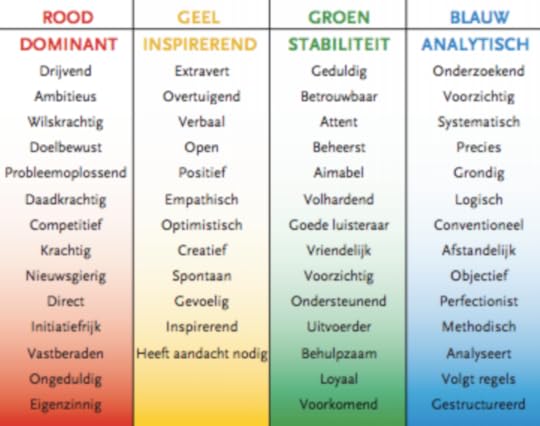
Het beroemde persoonlijkheids-kleurenpalet
We hebben de persoonlijkheidstest nooit gemaakt, dus dit is een gokje, maar ik kan ons hierin herkennen. Dit verklaart ook waarom Niels de link is tussen David en mij (non technisch) en Berke (technisch).
We zijn in ieder geval niet allemaal dezelfde kleur, anders hadden we denk ik niet bestaan.
Ik merk aan mezelf dat ik in ieder geval iemand naast me nodig heb die een andere kleur heeft dan ik. Iemand die me af en toe even met beide benen op de grond kan houden, zowel bij voor- als tegenspoed. Misschien heeft dit ook wel te maken met het feit dat je als beginnende-ondernemer de nodige ervaring mist.
Ik zou überhaupt de business niet alleen willen runnen. Het mooiste van allemaal is dat je succes kunt delen, maar ook je onzekerheden. Je staat er nooit alleen voor.
De Struggles: Imposter Syndrome

Eigenlijk vraag ik me iedere dag wel eens af of het allemaal wel werkt wat we doen.
Aangezien ik het klantcontact heb, vertel ik onze nieuwe klanten over ons bedrijf en waarom we anders zijn en vooral dat we goed zijn in wat we doen. Dit meen ik oprecht. Ik ben er oprecht van overtuigd dat we goed zijn in wat we doen en waarde creëren voor onze klanten, maar soms heb je vraagtekens bij je eigen kunnen. (vooral als er even iets misgaat)
Als ik me dan allerlei dingen ga afvragen, probeer ik terug te gaan naar de kern.
Het gaat uiteindelijk om het oplossen van het klantprobleem, waarbij ik mezelf de vraag stel:
“Zijn er in Nederland minstens 300 bedrijven die met een probleem rondlopen, dat wij kunnen oplossen en waarvoor ze willen betalen?” Hier kan ik volmondig ‘Ja’ op antwoorden. Die zijn er. Ik moet ze alleen nog zien te vinden.
In een jaar zijn we gegroeid van 0 betalende klanten naar 65 betalende klanten. Dit was 2020. Een niet al te best jaar (insert Covid…) om als net-afgestudeerde student je nog-niet-bewezen business aan de man te brengen.
Het feit dat het merendeel van deze 65 klanten terugkerende klanten zijn geworden geeft een soort van validatie aan. We lossen een probleem op en de klant wilt ervoor betalen.
Maar op het moment dat sommige vacatures wat achterblijven qua reacties en een klant eens vraagt waar de studenten blijven, schiet ik in de rollercoaster modus:
“wAArom LuKT diT noU niEt, wE kUnNEn OoK HElemaAL nIkS” – Iron Brands 2021 (iedere week minstens 1x)

Ik weet dat het goed komt, want dat is de voorgaande periodes ook gebeurd, maar die onzekerheid zorgt ervoor dat ik aan mezelf en de business ga twijfelen.
Ik weet ook niet zo goed wat er moet gebeuren om dit gevoel de baas te worden. Wellicht ligt het er ook aan dat we nog een fragiele business zijn, en nog bezig zijn met het leggen van het fundament.
Je wilt gewoon dat je business slaagt en op het moment dat ook maar iets dat in de weg staat, draait m’n maag om.
Dit gevoel is gelukkig maar van korte duur aangezien er altijd tegelijkertijd ook positieve dingen gebeuren. Ik zie sollicitaties, positieve reacties van studenten en nieuwe klanten online komen.
De oplossing voor het bovengenoemde ‘imposter syndrome’ heeft denk ik met tijd en ervaring te maken. Het is de eerste keer dat ik mezelf ondernemer mag noemen en dus is alles nieuw. Hierdoor zijn de highs enorm high en de lows ook een stuk lower.
Als Fiks faalt, dan faalt het. Zolang ik er maar alles aan gedaan heb om het te laten slagen.
Ik heb als persoon het afgelopen jaar 10x meer geleerd dan dat ik gedaan heb op de universiteit. Dat is al een reden om nog harder te gaan en er alles uit te halen. Maar nog veel belangrijker is dat we iets aan het bouwen zijn dat studenten helpt om de juiste eerste stap laat zetten in hun professionele carrière.
Dan krijg je af en toe dit soort berichtjes en dan zit je weer in de rollercoaster naar boven.

Reactie van een van de studenten

Top dat je tot hier hebt gelezen! Ik ben heel benieuwd wat je ervan vond.
Volgende maand komt de volgende update. Oh en zijn jullie ook nog op zoek naar stagiairs? Stuur me even een berichtje via Linkedin of check Fiks voor Bedrijven.
Ook hebben wat studenten gemeld ons hier gezien te hebben, dus @studenten, ben je op zoek naar een stage? Meld je aan voor Fiks WhatsApp Service en wij gaan je helpen!
Namens de boys van Fiks,


Iron Brands, Co-Founder Fiks
The post Fiks | Het perfecte StartUp team: hustler, hacker en een hipster appeared first on Seats2meet.
December 7, 2021
How’s your Coworking Space? A New Coworking Trends Survey Explores Current Business Trends
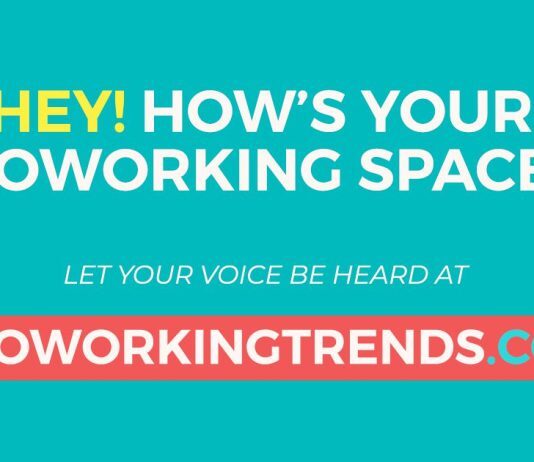
The global pandemic is unfortunately still impacting coworking spaces around the world. Many hot takes are being published and talked about. But there is little data about its business impacts on coworking spaces, especially when considering the ongoing changing situations.
Let’s find out more together: We have developed a super quick survey for providers of coworking spaces and other flexible workspaces in order to keep a spotlight on their current situation.
Why you should support coworking researchIt won’t take more than 4 to 8 minutes. The final results will be published in free Deskmag publications. A survey is only useful if enough people take part. More respondents gives us more detailed and reliable data. We want to include a wide range of spaces as our movement is quite diverse – that’s what we love about it.
Who is behind this survey for coworking space operators?Deskmag is the magazine about the new type of work and their places, how they look, how they function, how they could be improved and how we work in them. We especially focus on coworking spaces which are home to the new breed of independent workers and small companies.
For more than ten years we have conducted the annual Global Coworking Survey and our data reports have been downloaded thousands of times and are widely read within and beyond the coworking industry. The Global Coworking Survey will be back in 2022.
Any questions?The post How’s your Coworking Space? A New Coworking Trends Survey Explores Current Business Trends appeared first on Seats2meet.
November 26, 2021
6 Tips on How to Beat Loneliness While Working Remotely

Due to the effects of the coronavirus pandemic, most office spaces are closed and have been for a while. People have to do their work from home, which presents a whole new set of problems in itself. Productivity issues are a given, but one of the more subtle and insidious problems remote workers face is loneliness.
Working alone in your house, day in and day out, can be extremely frustrating. In an office environment, where there is constant chatter and conversation to listen to. That is why, in this article, we will take a look at some of the methods which can be employed by freelancers, remote workers, and entrepreneurs to beat back loneliness.
Organize Group Calls With Other Employees
Sure, when you work online, you get to chat with others and see each other in meetings, but what about conversations by the water filter? Gossipping about the latest developments in the media? Passionate discussions about music on the commute? There is no room for that. There is only the screen, the wall, and the many distractions that come with the environment.
Unless you change it, of course, and you should. Connect with your coworkers and talk to them as you would normally. Stay on a call with people while working so that you can discuss things normally and help each other stay focused and ready. Get on a group call and have the discussions you would have during lunch break. It’s a good way to stay connected.
Try Working Somewhere Outside Your Home
This might seem counter-productive, but it is worth a shot. Many professionals’ main problem when working from home is the oppressive feeling of being trapped within four walls. Your home is supposed to be just that – your home. It is somewhere you come back to from work. Turning it into your working environment can have some very unfortunate consequences.
So, take your work outside. Find a nice little coffee shop where you can occupy a corner and get your work done. With the background chatter of the many patrons coming and going, and the welcoming and open atmosphere, many of these places have, you are bound to feel a little bit like you’re back in the office. At least, the walls won’t press in on you as much.
Optimize Your Flexible Working HoursAll work and no play make Jack a dull boy. The saying exists for a reason, and it is brimming with truth. Working from home often results in people overworking themselves far beyond the hours they usually would. If you’re doing this, then you need to take a step back and prioritize self-care. You’re working from home. Space out the work according to what you need to do.
For example, go out in the morning for breakfast with friends. Catch a movie in the afternoon. Spend the evening with friends and family. Stop isolating yourself and surround yourself with people you love. This will keep you energized and focused. Don’t worry about work – you can plan around these essential activities. It’s one of the best perks you have.
If you moved to a new city before lockdowns hit, you might be in a fix. You can’t meet your coworkers, and you can’t go out to meet new people, either. But just because mass social gatherings are currently out of favor doesn’t mean you have to stew in your loneliness. There are tons of apps that help you connect with people to talk to in your area.
Tanya Rak, Taimi PR Manager, has spoken widely about the problems people face from all stripes and colors to find a meaningful connection in this day and age. LGBTQ+ people are especially at a disadvantage. But with the sheer number of dating and social media apps available geared towards meeting new people, it really shouldn’t be too hard to find someone you hit it off with.
Improve Your CommunicationEven if you get limited time to talk to coworkers, make the most of it. Find a way to be friendly and open, bring up your interests, and prepare icebreakers for the meetings. Your active communication will loosen everyone else up and bring you closer. You will inspire others to do the same, and before long, you will be chatting away like old school friends.
You need to make friends get through the situation. If you can make your work hours more enjoyable, it won’t feel like a chore. Creating a better relationship with your coworkers is very rewarding and makes you feel like you belong. The company feels like a collection of people instead of just you working away in your room. Avoid feeling this way and practice active communication.
Take Some Time Off For YouAmidst all the hustle and bustle of daily life, it can be very easy to forget the most important person in your life – you. Yes, you. Without you, there would be nothing – nothing for your friends and family to be grateful for. You need to take care of yourself, too, so take some time out to do things that you enjoy, just for the sake of yourself.
Order in some food you really like. Read that book you’ve been waiting to start. Dance to some music. Play some video games. Organize your workspace. Get in the bathtub for a long, hot soak. There are many things you can, and should, do to relax. You’re not just another brick in the wall. You have needs. Find out what they are and meet them.
ConclusionLoneliness is not a recent phenomenon. Since 2016, doctors have warned that the feeling may take hold in a huge percentage of adults, leading to an epidemic. It is ironic, then, that it took one epidemic to exacerbate another. As if the coronavirus pandemic wasn’t serious enough, remote working is so new in the public consciousness that no true guides exist for the masses to look at.
However, whatever else you might do, do not suffer in silence. Do not think that you are alone. There are thousands of people going through similar things, and if you just try, you will be able to make things so much better for yourself. You need to find what works for you and then do it. It is that simple. Be a little kinder to yourself this year. Don’t let loneliness win.
The post 6 Tips on How to Beat Loneliness While Working Remotely appeared first on Seats2meet.
Preparing for 2022 as a Business: 4 Things to Keep in Mind

Since the eruption of the pandemic, the business landscape has become highly unpredictable. To stabilize your company’s operations and increase your profit margins, you need to keep testing and tweaking your business strategy.
In this article, we share several previous insights that will help you prepare for 2022.
Address the Changing Employee NeedsSince the Coronavirus pandemic outbreak, your employees’ lives have dramatically changed. Travel bans, tragic loss, career uncertainty, and the constant fear for health have become their New Normal.
Therefore, a big salary is not your employees’ top priority. In 2022 and beyond, the quality of life will be their top priority.
For starters, offer more flexible work arrangements. Remote and hybrid work have significantly improved employee productivity, engagement, and morale. According to PwC, 83% of employees say they are more productive when working from home.
Therefore, ask your team about their work preferences. Studies emphasize that 39% of employees would quit if their employers made them get back to the office.

Coronavirus introduced businesses with a plethora of new challenges. Supply chain disruptions and economic instability are the biggest threats to small business growth. To keep up with the ever-expanding COVID-19 pandemic, you need to prepare your business for future financial challenges.
Coronavirus has disrupted supply chain management and resulted in massive supply delays. Even if you pay for your supplies in advance, a vendor might not be able to deliver them due to international shipping restrictions. Without having trade finance mechanisms in place, your business may fall behind on payments or customer service. That funding method lets you pay your suppliers upfront without compromising your business operations or financial stability.
Digitally Transform your BusinessOver the past few years, the adoption of digital transformation in the business ecosystem has skyrocketed. Industry experts predict that global spending on digital transformation will exceed 2.4 trillion by 2021.
The COVID-19 crisis has made the process even more significant. According to a global survey, over 97% of businesses emphasize that Coronavirus has accelerated their digital transformation.
Digital transformation should reimage all areas of your business, from customer service to logistics. It requires a complete overhaul of your company culture and processes. By investing in cloud technologies, Artificial Intelligence, and advanced data analytics, you can bridge the gap between your workers, data, and customers.
CRM is a perfect example of business process optimization. The software connects your sales, marketing, and customer service data, eliminating the silo mentality from your organization. It automatically captures customer data across multiple channels and keeps it in a central location. That significantly improves your workflows and employee performance, allowing them to deliver faster and relevant customer service.

As mentioned above, digital transformation delivers numerous benefits to your business. It automates a wide range of repetitive tasks. By migrating to the cloud, you allow employees to work remotely and communicate from multiple locations. Digital commerce makes your brand available 24/7, even during the lockdown.
In other words, digital transformation empowers your company’s growth. However, its implementation comes with countless challenges. One of them is cybersecurity issues.
With the rise of remote work and eCommerce, online crimes will take a central place in 2022 and beyond. For hackers, the pandemic is a chance to exploit the vulnerability of the remote workforce. According to Deloitte, 47% of cyberattack victims experienced a phishing scam while working from home.
The reasons for that are multiple. For starters, remote employees use unauthorized computers and unreliable internet networks for work. They scroll down social media feeds, visit numerous unsafe websites, open emails from unreliable sources, and click on suspicious links.
Therefore, to strengthen your cybersecurity efforts in 2022, invest in employee cybersecurity training. It should raise their awareness of cybersecurity risks and common network vulnerability points. The training program should teach them to recognize online scams and avoid falling victim to them.
Next, set clear cybersecurity protocols and policies. Here are several practices that may help you:
List the locations eligible for remote work, such as a coworking space or their homes. Explain why coffee shops with public internet connections are never a good option. List the cybersecurity tools they should install on personal devices while working, such as antivirus, anti-malware, firewalls, etc.Set rules for creating passwords on business-related platforms.Introduce strict reporting policies and guides in case of cyberattacks. Employees should understand the chain of command and know what to do in a crisis.Over to YouThe feelings of unpredictability and fear dominated the business landscape since the Coronavirus breakout. The same applies to 2022 – no one knows what exactly it will look like. Therefore, the goal is to enhance business flexibility and maximize its stability on the go. Only that way can you prepare for sudden changes in these uncertain times.
The post Preparing for 2022 as a Business: 4 Things to Keep in Mind appeared first on Seats2meet.
Paretify: using technology to easily accomplish fair negotiations for both parties

How you negotiate on salary and secondary benefits has a big influence on your work and your ability to work. Especially if you are a freelancer, solo entrepreneur or part of a small team. If the price is too low, it might influence relations-building, your enthusiasm and even the quality of the outcome. On the other hand, setting the price to high might cause other problems. How to solve that dilemma?

This is where Paretify comes in. Their tools combine technology, mathematics and data in order to simplify complex negotiations. Providing the best possible win-win solution for all parties in the process. We have Morten Raahauge, one of the founders of Paretify, tell us more about the idea behind the tool, and why your experience is important for bringing aspirations to life.
The 80/20 Rule
Paretify is a Danish startup, but the name comes from Vilfredo Pareto (1848-1923). He was an Italian economist, sociologist and engineer. He is best known for two principles:
The first of these is a “Pareto distribution” – also known as the 80/20 rule. The widespread phenomenon that 80% of the consequences in an area are due to 20% of the causes.The second concept is a Pareto equilibrium, which is a mathematical equilibrium in a negotiation between two agents based on a number of weighted parameters.What does this mean to freelancers and entrepreneurs?
If you’re self-employed, you may have observed the tendency that 20% of your clients are responsible for 80% of your earnings. This may (certainly should) give you cause to consider how much resources you spend on your various clients and suppliers.
However, it is the second principle – the Pareto Equlibrium – which is at the heart here. How can use this principle to help freelancers, solo-entrepreneurs and small teams as they negotiate price and conditions relating to projects and deliveries?
“Most people can handle the complexity of more than 3 parameters at the same time. You can’t calculate all the different outcomes and solutions in your head. But technology can help you keep track, reduce complexity and do the math.
These days, clients and freelancers often end up discussing just price. Whether is a fixed price, the hourly fee and subsequent discounts and retainer options. It produces an uneven playing field and actually also horrible solutions for all. The process is not efficient and both the client and the freelancers leave options and money on the table. We can turn this around using tech. So that everybody wins.
Also, technology can help negotiate if you don’t like the process, don’t think you are good at it or just appreciate precise guidance as you go. Negotiation technology is definitely going to be a thing in the future.”
What is the tool going to look like? How do people access it?
“We are planning for a mobile app. Makes sense as freelancers are often on the road and quite tech savvy. We see it as a stand-alone solution but it should also work as a plug-in on platforms connecting clients and freelancers. Pricing will be a monthly fee – 5 Euros or so. Super cheap – something you don’t consider and is instantly covered by the positive results.
We are working with Seats2meet to understand the needs and wants of freelancers, how to set up the business model and also work with all the amazing talent as we develop the solution. We hope to build a sort of beta-tester community around this. Really interact to understand and provide the best possible solutions.
Why should people use a tool like this?
“First of all, negotiating and setting prices is hard for all freelancers. It is something you need to learn, but learning is often individual and super slow. And if you make mistakes, they are often costly. The reason why we wish to make a tool is so that all freelancers can benefit from the accumulated experience in the network, have benchmarks made available to them and the whole process clearly mapped out. Empowerment and help to make better negotiations and therefore better business. Help to sustain themselves and live a better freelance life.
Moreover, most negotiations focused on one parameter only – price. The negotiation becomes simple arguing about this one parameter. A zero-sum game you can only win or lose. The result is rarely attractive to any of the parties. An unpleasant experience that does nothing to build relationship. Our method ensures a more transparent process, a more collaborative approach and neither the freelancer or clients leaves opportunities or money at the table. Everybody wins. Surely, that should be more attractive to all parties?”
Where are you now in the process of developing?
“We don’t have a prototype just yet. We want to make sure we have product market fit. Which is why we are still doing workshops. We do have another solution that helps people to negotiate salaries and benefits, so we should be able to build on some of this work.
Besides working with seats2meet we also work with CWI in Amsterdam. CWI is the Dutch national research institute for mathematics and computer science. One of the researchers, Tim Baarslag, is an expert in the combination of Pareto outcomes and how to use machine learning and AI to achieve it.”
What do you need from the Seats2meet community to help with the development of Paretify?
“We need input from experienced freelancers, to determine what the relevant parameters are. How they are connected.
The tool should also help you identify and mitigate risks. Let’s say you go for a fixed price. Usually, you end up spending too much time. It that is true, what then also needs to be true for the project to make sense. Is it a great opportunity for network and more work down the line? How do you get paid? Up front? In 3 months? Do you have immediate access to decision-makers? Do you need to work onsite or it is just remote? Who pays for transport? Etc. We need the input of the seats2meet experts on this!
What can you offer to Seats2meet people who will help Paretify with their experience and skills?
“For everyone who participates in our workshops we provide free and eternal access to the tool from prototype onwards. The same will be true for everyone who wants to be part of our beta-community. Seats2meet is based on reciprocity. We want to honor that principle. Collaboration always yields the best solutions and results.
Where can people sign up?
“If you want to be part of the project and participate in the workshops, please get in touch with us directly via email to info@paretify.com marked “RETRIEVER” (name of the project). Just state your contact information, and we will get right back to you.
Other than being a free agent or part of a small team, you can have any background, any age, any color, work in any business, have any expertise or skills set. The more diverse, the better!
Looking forward to meeting you!”
Additional information
For more information on Paretify and they work, please visit the LinkedIn company profile and the company website.
The post Paretify: using technology to easily accomplish fair negotiations for both parties appeared first on Seats2meet.
November 19, 2021
Meta/Mesh en de gave mogelijkheden van virtual reality
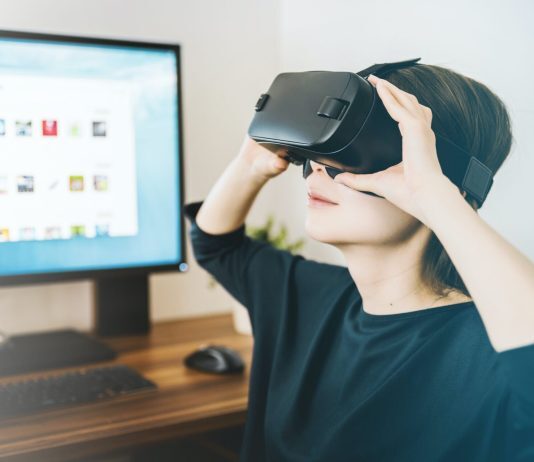
Metaverse, Multiverse of Mesh: nu Facebook en Microsoft hebben aangekondigd hier grote stappen in te nemen, wordt virtual reality plotseling meer besproken dan ooit. Onderdelen van deze nieuwe wereld zijn er echter allang en vinden steeds meer hun weg in ons dagelijks leven. De grote techspelers proberen hun positie in deze nieuwe werelden te claimen. Opletten, dus. Maar het wordt leuker wanneer jij je realiseert dat deze nieuwe wereld al veel meer is dan een paar poppetjes die met elkaar praten in plaats van de echte mensen, die het gesprek voeren via het scherm met behulp van Zoom, Teams of Jitsi. In deze blog ga ik dieper in op het feit dat het idee al langer bestaat, en welke gave voorbeelden van virtual reality we tegenwoordig al kunnen vinden.
Door: Ronald van den Hoff, auteur van Society 3.0
Multiverse: 2008
In 2008 benoemde de Amerikaanse managementdenker Joe Pine al zijn ‘Multiverse’. Zijn ideeën lanceerde hij tijdens een bijeenkomst in Amsterdam, waarvan Frankwatching een mooie samenvatting publiceerde.
Volgens Pine staat de Meta/Mesh Verse uit 8 onderdelen, welke in de genoemde blog op worden besproken. Uitgangspunt voor Pine zijn in de Multiverse 3 dimensies van belang:
TijdPlaatsMaterieDoor de technologie kun je deze dimensies ook loslaten op de virtualiteit, of er een combi van virtualiteit en realiteit van maken. Dat zijn er dan 8, volgens Pine. Die combi’s zien we momenteel al voorbijkomen of dienen zich in sneltreinvaart aan:
Voorbeelden van Meta/Mesh
De wereldberoemde Ed Sheeran treedt live op in de virtuele spel-omgeving van Pokémon Go. Een combi van realiteit (Ed himself) en virtualiteit (de wereld van Pokémon) waar fysieke Pokémonspelers virtueel aanwezig zijn.Bij Pathé-bioscopen kun je fysiek naar een scherm kijken, waar echt fysiek publiek in een stadion te zien is, die kijken naar een virtueel scherm, waarop fysieke game-teams te zien zijn, die een worldcup finale van het virtuele spel Fortnite spelen.Bij Seats2meet Utrecht experimenteren we momenteel met bijeenkomsten in een virtuele locatie (een levensechte virtuele kopie van de fysieke locatie). Deelnemers sturen hier hun avatar naar toe of zijn zelf in beeld.Het onderwerp ‘echt-nep’ wordt zichtbaar bij de influencer Esther Olofssen, een virtueel kunstmatig gecreëerde dame of de artieste Hatsune Miku, een virtueel figuur welke gecreëerd is rondom spraaksynthese software, waarbij die dame via hologram projectie ‘live’ optreedt in een fysiek stadion met fysiek ‘echt’ publiek.In de Efteling kunnen rolstoelgebruikers via een V(virtual) R(reality) bril deelnemen aan de Droomvlucht-attractie. Het bijzondere hier vind ik – zo liet ik me vertellen door Jos, een van de ondernemers waarmee ik werk – dat terwijl de vrouw van Jos met kind 1 de attractie fysiek ging beleven, Jos zelf met kind 2 via de VR-bril parallel mee op dezelfde reis gingen. Beide koppels stonden met elkaar in verbinding en konden zo samen, real-time, hun ervaringen van deze attractie met elkaar delen. Beiden hadden zo exact dezelfde experience en was er feitelijk geen verschil meer tussen de virtuele ervaring en de fysiek. Cool!Virtual Reality bevordert inclusiviteit
Kortom: de battle van de techreuzen voor de wereldhegemonie van de metaverse/mesh is begonnen. Daar dienen we goed op te letten en vanuit Europa strakke spelregels voor op te stellen. In de tussentijd maken bedrijven zoals de Efteling prachtige toepassingen, die de inclusiviteit bevorderen. Dat is dan weer heel mooi!
Stay up-to-date voor de volgende blog over Meta/Mesh en virtual reality!
The post Meta/Mesh en de gave mogelijkheden van virtual reality appeared first on Seats2meet.





